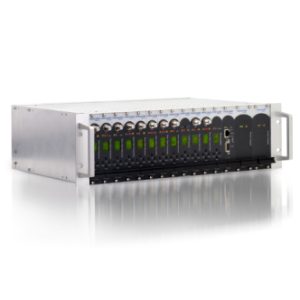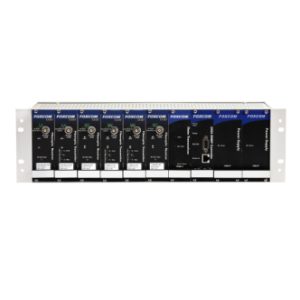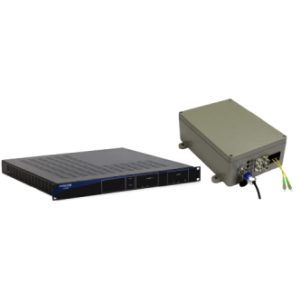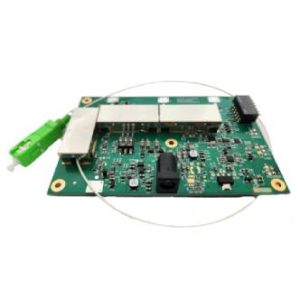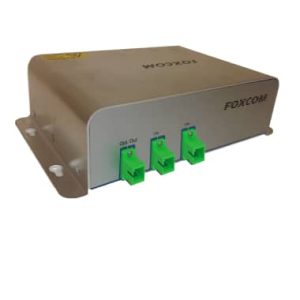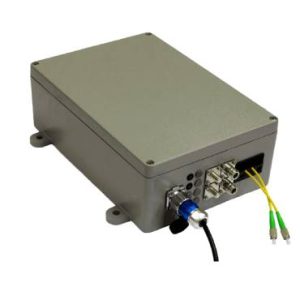
RF Over Fiber for Earth Station Site Diversity
The Challenge
The Solution
Turnkey Benefits of Global Foxcom’s RF over Fiber Solutions
Distance
Flexible
Unlimited Bandwidth
Immune to EMI/RFI
Security
Cost Effective
RF Over Fiber Applications
- Satellite Earth Stations and Teleports Enables long-distance, low-loss transmission of L-band signals between antennas and control rooms, ensuring high signal integrity in satellite communication systems.
- Broadcast Facilities Delivers high-quality audio and video signals over long distances with minimal interference.
- Sport Stadiums Distributes RF signals seamlessly across large venues for broadcasting, security, and communication systems, ensuring reliable coverage.
- High-Rise Buildings and Hotels Provides centralized signal distribution for TV, internet, and security systems over fiber with reduced interference.
- University Campuses Connects multiple buildings with stable RF signals for research, surveillance, and communication systems across wide campus areas.
- Shopping Malls Supports consistent signal coverage for wireless services, security systems, and in-building communication infrastructure.
- Airport and Railway Stations Facilitates secure, high-performance RF signal distribution for communication and operational control over large terminals.
- Gated Communities Delivers RF services, such as TV and internet, with minimal signal degradation, supporting centralized security monitoring.
FAQs
RF Over Fiber (RFoF), also known as Radio Over Fiber, is a technology that uses optical fiber cables to transmit radio frequency (RF) signals over long distances. By converting RF signals into optical signals, RFoF systems achieve low signal loss, improved bandwidth, and resistance to electromagnetic interference.
- Optical Transmitter: Converts RF signals into optical signals using a laser diode.
- Optical Fiber: Medium for transmitting the optical signals over long distances.
- Optical Receiver: Converts the optical signal back to an RF signal using a photodetector.
- RF Amplifiers: Used for signal boosting at both the transmission and reception ends.
Standard single-mode fiber (SMF) is commonly used for RFoF applications due to its low attenuation and ability to support long-distance transmission.
Global Foxcom’s RFoF solutions are compatible with SMF infrastructure, simplifying deployment while ensuring exceptional signal integrity.
- RFoF: Analog transmission of RF signals over fiber, maintaining original signal characteristics.
- D-RFoF: Digital conversion of RF signals before transmission, which can reduce noise but adds latency and requires extra processing.
Yes, RFoF is increasingly used in 5G infrastructure for backhaul, fronthaul, and remote radio head (RRH) connections due to its low latency and high-frequency capabilities.
Temperature variations can impact laser diodes and optical fibers, causing signal drift. Temperature-stabilized components help mitigate these effects.
Global Foxcom designs its RF over Fiber systems to deliver stable performance under extreme and variable environmental conditions—critical for defense, airborne, and remote installations.
Yes, Global Foxcom’s RFoF products are designed to integrate with traditional RF systems using appropriate interfaces and converters. It is often used to extend or replace parts of existing RF distribution networks.
Global Foxcom offers customizable solutions that bridge legacy systems with next-gen RFoF capabilities—enhancing reliability and future scalability.
An RF over Fiber module is essentially the building block of an RFoF system — a compact transmitter or receiver that slots into a rack-mounted chassis. At Global Foxcom, our modules are hot-swappable, smartly engineered, and cover wide frequency ranges.
Whether you’re working on a satellite ground station, a telecom system, or a defense network, these modules give you the flexibility to add or change capabilities without overhauling the entire setup — making them a practical choice for expanding or upgrading systems over time.

